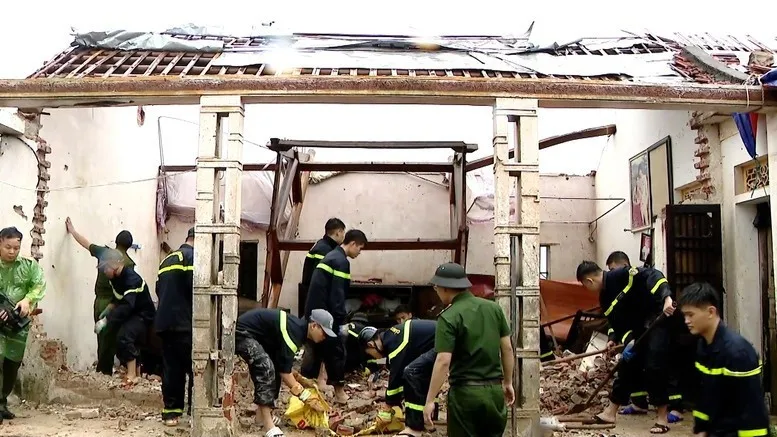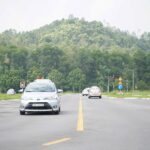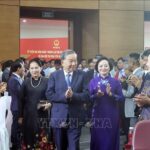Prime Minister Pham Minh Chinh has signed Official Dispatch No. 188/CĐ-TTg dated October 6, 2025, requesting ministries, sectors, and localities to proactively respond to the risks of heavy rain, flash floods, and landslides due to the impact of Typhoon No. 11.

The official dispatch was sent to the Chairpersons of the People’s Committees of the provinces and cities: Cao Bang, Lao Cai, Lang Son, Bac Ninh, Thai Nguyen, Tuyen Quang, Phu Tho, Son La, Dien Bien, Lai Chau, Hanoi, Hai Phong, Hung Yen, Ninh Binh, and Thanh Hoa; Ministers of the Ministries: National Defense, Public Security, Agriculture and Environment, Industry and Trade, Education and Training, Science and Technology; Office of the National Steering Committee for Civil Defense.
According to the bulletin from the National Center for Hydro-Meteorological Forecasting, this morning Typhoon No. 11 made landfall in Guangxi Province — China (near the Vietnam-China border area) and weakened into a tropical depression. However, according to forecasts, the circulation of Typhoon No. 11 will cause heavy rain and possible thunderstorms on October 06-07, 2025: in the mountainous and midland areas of the Northern region, rainfall is generally 100-200mm, with some places experiencing very heavy rain of over 300mm (especially the risk of intense rainfall exceeding 150mm in 3 hours); the Northern Delta and Thanh Hoa areas will have moderate to heavy rain with rainfall generally ranging from 50-150mm, and some places experiencing very heavy rain of over 200mm.
This heavy rain episode comes immediately after recent prolonged heavy rains due to the influence of Typhoon No. 10’s circulation. Many areas have water-saturated soil, and rivers and reservoirs are already full, posing a very high risk of continued major flooding in small streams and upstream areas, flash floods, and landslides in the mountainous and midland regions of the Northern and North Central regions, as well as urban flooding in low-lying areas.
To ensure the safety of lives and minimize property damage for the people, the Prime Minister requests Ministers of Ministries, Chairpersons of People’s Committees of provinces and cities in the Northern region and Thanh Hoa not to be negligent or subjective, and to continue strictly implementing the directives of the Politburo and Official Dispatch No. 186/CĐ-TTg dated October 4, 2025, from the Prime Minister regarding the response to Typhoon No. 11. They must focus on closely monitoring, regularly updating the situation, and promptly, effectively, and synchronously implementing measures for prevention, response, and combating of heavy rain, flash floods, and landslides according to their functions, tasks, and authority; promptly report to competent authorities for guidance on issues beyond their authority.
Thoroughly review each residential area, each household, and promptly support people to evacuate from dangerous areas
Chairpersons of People’s Committees of provinces and cities, especially provinces in the midland and mountainous regions, are to direct and mobilize forces (on-site disaster response teams, police, military, functional forces, militia, youth, etc.) to synchronously and decisively implement measures to ensure the safety of lives and minimize property damage for the people caused by flash floods and landslides, including:
Based on the actual situation and rainfall forecasts in the locality, consider allowing students to study online instead of attending school if deemed necessary to prioritize student safety above all else.
Thoroughly review each residential area and each household, promptly detect, and proactively support households to evacuate from dangerous areas at risk of landslides, flash floods, and deep flooding during heavy rain.
Use all means to promptly inform people about the rainfall situation in the area; propagate, guide, and advise people to proactively limit travel and activities during flood periods; control and restrict people and vehicles from traveling on routes at risk of becoming unsafe during floods; arrange forces for strict control, guidance, and traffic support through flooded underpasses and deeply submerged road sections.
Ensure the safety of dykes and reservoirs, prevent overlapping floods
The Prime Minister also assigns Chairpersons of People’s Committees of provinces and cities to proactively closely monitor, operate, and regulate to ensure the safety of reservoirs, preventing overlapping floods or issues due to subjective factors; implement measures to ensure dy






